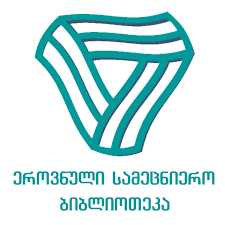გთხოვთ, გამოიყენოთ ეს იდენთიფიკატორი ამ ერთეულის ციტირებისთვის ან ბმულისთვის:
https://openscience.ge/handle/1/2725| DC ველი | მნიშვნელობა | ენა |
|---|---|---|
| dc.contributor | Laboratorio de Paleomagnetismo, Dpto. Física, Universidad de Burgos, Burgos, España | es |
| dc.contributor | Servicio Arqueomagnético Nacional, Instituto Geofísica, Campus Morelia, UNAM, México | es |
| dc.contributor | Laboratorio Interinstitucional de Magnetismo Natural (LIMNA), Instituto Geofísica, Campus Morelia, UNAM, México. | es |
| dc.contributor | Área de Prehistoria, Departamento de Historia, Geografía y Comunicación, Universidad de Burgos, Burgos, España. | es |
| dc.contributor | Instituto de Arqueología y Etnología, Universidad Estatal de Tbilisi, Tbilisi, Georgia. | es |
| dc.contributor.author | García-Redondo, N. | en |
| dc.contributor.author | Goguitchaichvili, A. | en |
| dc.contributor.author | Calvo-Rathert, M. | en |
| dc.contributor.author | Carrancho, Á. | en |
| dc.contributor.author | Licheli, Vakhtang | en |
| dc.date.accessioned | 2021-12-29T11:17:46Z | - |
| dc.date.available | 2021-12-29T11:17:46Z | - |
| dc.date.issued | 2019 | - |
| dc.identifier.citation | Latinmag Letters, Volume 9, Special Issue (2019), A01-O, 1-3. Proceedings Rancagua, Chile | en |
| dc.identifier.uri | https://openscience.ge/handle/1/2725 | - |
| dc.identifier.uri | https://doi.org/10.48616/latlet-v8-si2013-A.01-O | - |
| dc.description.abstract | We present a reconnaissance archaeomagnetic study carried out on archaeological samples from the archaeological site of Grakliani (Georgia). Samples were taken from 10 combustion structures (ovens and possible altars). In addition, we analyzed some pottery fragments with a good age control. Both pottery fragments and samples from combustion structures, yielded an age interval that ranges between XII BC and I BC, so that the present study covers a wide period of time for which few archaeomagnetic data are available in Caucasus. We performed rock-magnetic analyses, directional studies (thermal and stepwise alternating field demagnetizations) and archaeointensity experiments using the Thellier-IZZI protocol. Rock magnetic analyses included measurement of IRM acquisition curves, hysteresis loops, backfield curves and high temperature, continuous thermomagnetic curves. The main magnetic carrier is pseudosingle domain Ti-poor titanomagnetite. So far, we have obtained a mean direction for nine combustion structure and acceptable archaeointensity results for five sites together with three pottery fragments of different ages. | en |
| dc.language.iso | es | en |
| dc.publisher | Universidad Nacional Autónoma de México | es |
| dc.subject | Archaeomagnetism | en |
| dc.subject | Archaeointensity | en |
| dc.subject | Geochronology | en |
| dc.subject | Magnetic properties | en |
| dc.title | Estudio Arqueomagnético En El Yacimiento Arqueológico De Grakliani (Georgia) | es |
| dc.type | Article | en |
| dc.type | სტატია | ka |
| item.languageiso639-1 | es | - |
| item.cerifentitytype | Publications | - |
| item.cerifentitytype | Publications | - |
| item.openairetype | Article | - |
| item.openairetype | სტატია | - |
| item.openairecristype | http://purl.org/coar/resource_type/c_18cf | - |
| item.openairecristype | http://purl.org/coar/resource_type/c_18cf | - |
| item.fulltext | With Fulltext | - |
| item.grantfulltext | open | - |
| crisitem.author.orcid | 0000-0003-3134-8694 | - |
| ჩანს კოლექციებში: | სამეცნიერო ნაშრომები | |
ფაილები ამ ერთეულში:
| ფაილი | აღწერა | ზომა | ფორმატი | |
|---|---|---|---|---|
| Licheli . Estudio Arqueomagnético En El Yacimiento Arqueológico De Grakliani.pdf | Estudio Arqueomagnético En El Yacimiento Arqueológico De Grakliani (Georgia) | 398.17 kB | Adobe PDF | დათვალიერება-გახსნა |
CORE Recommender
გვერდის დათვალიერება
125
checked on May 22, 2024
გადმოწერა
20
checked on May 22, 2024
Google ScholarTM
გადამოწმება
ერთეულები ციფრულ საცავში დაცულნი არიან საავტორო უფლებით, ყველა უფლების დაცვით, თუ სხვაგვარი რამ არაა მითითებული.

